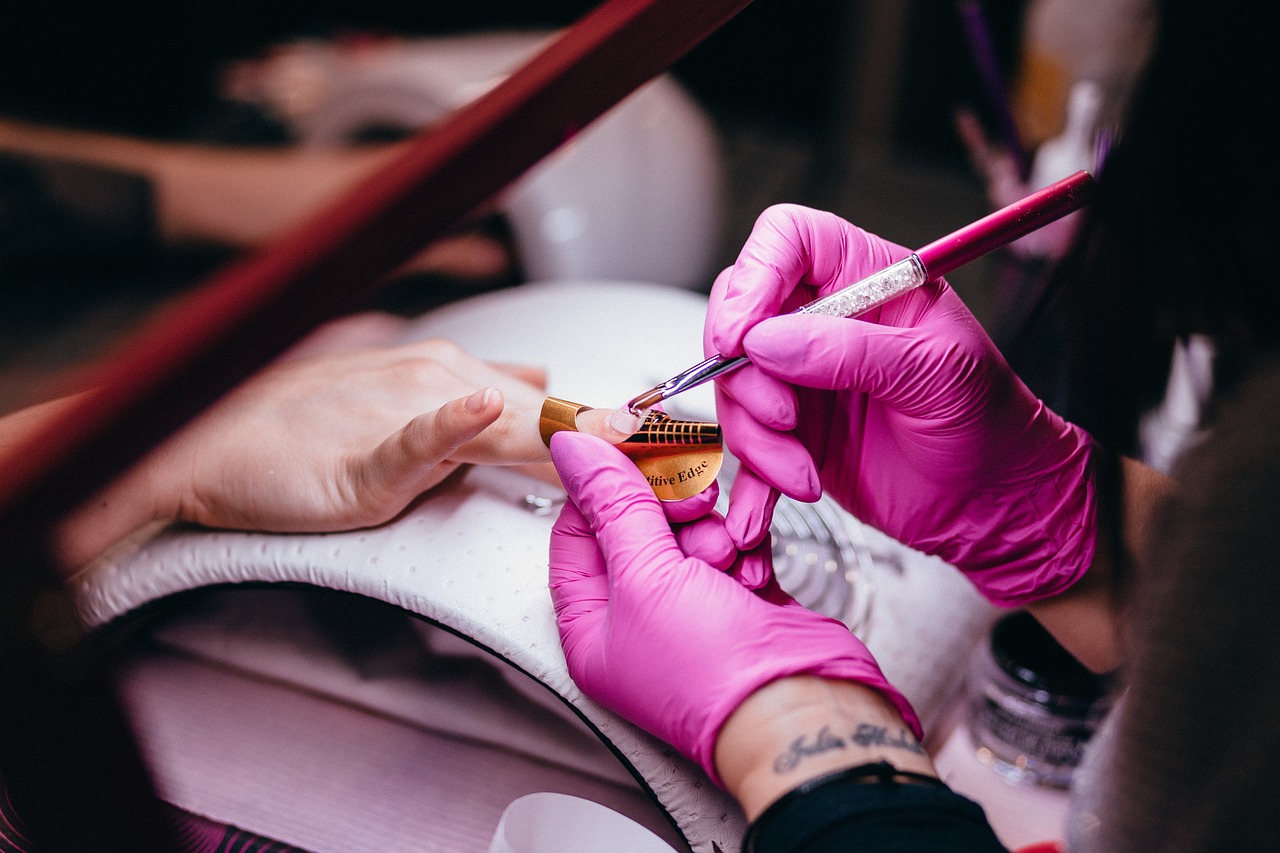
How to Remove Nail Art Without Damaging Your Nails
Nail art is a fun way to express creativity and add flair to your look, but when it's time for a change, removing intricate designs can be tricky. Incorrectly removing nail art can lead to weakened, brittle nails or even permanent damage. That’s why it’s essential to know the best methods for safely removing nail polish, gel nails, acrylics, and more.
In this comprehensive guide, we’ll walk you through the proper steps to remove different types of nail art without harming your nails. Whether you’ve opted for regular nail polish, gel, or acrylic, we’ve got the techniques and tips to ensure your nails remain healthy and strong.
Why Proper Nail Art Removal Matters
Removing nail art correctly is crucial for maintaining the health of your nails. Improper removal techniques—like peeling, scraping, or using harsh chemicals—can lead to problems such as:
- Brittle nails that split, crack, or break easily.
- Thinning of the nail bed, making nails more prone to damage.
- Peeling nails that look uneven and unhealthy.
- Irritation or infection of the nail bed or cuticles.
By following the right removal process, you’ll not only protect the health of your nails but also maintain a smooth, strong surface for future manicures.
1. Removing Regular Nail Polish Safely
When it comes to regular nail polish, the removal process is relatively straightforward. However, using the wrong products or techniques can still leave your nails dry and weak.
Step-by-Step Guide to Remove Regular Nail Polish:
Choose the Right Nail Polish Remover: Opt for an acetone-free nail polish remover if possible. Acetone is effective but can be extremely drying and cause your nails to become brittle over time. Acetone-free removers are gentler and still get the job done without excessive damage.
Soak a Cotton Ball or Pad: Pour the nail polish remover onto a cotton ball or pad. Make sure it's saturated, but not dripping.
Press and Hold on the Nail: Place the saturated cotton ball on your nail and hold it there for 10-15 seconds. This allows the remover to dissolve the polish before you start wiping it off.
Wipe Gently: Once the polish has softened, wipe the cotton ball or pad from the base of the nail to the tip. Avoid scrubbing or using excessive force, as this can cause damage to the nail surface.
Buff and Moisturize: After the polish is removed, gently buff your nails to smooth any rough patches. Follow up with a moisturizing cuticle oil or hand cream to rehydrate your nails and prevent dryness.
2. Removing Gel Nail Art Without Damaging Your Nails
Gel manicures are popular for their long-lasting, chip-free shine. However, removing gel polish requires more care than regular nail polish due to its strong adhesive properties. Peeling or scraping off gel can lead to severe damage, including thinning or weakening the nail bed.
Step-by-Step Guide to Remove Gel Nails:
File the Surface of the Gel Polish: Start by gently filing the top layer of the gel polish using a medium-grit nail file. This breaks the seal on the top coat, making it easier for the remover to penetrate the gel. Be careful not to file too much, as you only want to remove the shiny top layer.
Soak Cotton Balls in Acetone: For gel polish, you’ll need acetone-based remover. Soak cotton balls in acetone until they’re fully saturated.
Wrap Your Nails in Foil: Place the acetone-soaked cotton balls on your nails and wrap each nail in aluminum foil to hold the cotton in place. The foil helps trap heat, speeding up the removal process.
Wait 10-15 Minutes: Allow your nails to soak in the acetone for 10-15 minutes. During this time, the acetone will break down the gel polish, making it easier to remove.
Gently Push Off the Gel: After soaking, use a cuticle pusher or orangewood stick to gently push off the softened gel. Start at the cuticle and work your way to the tip. If the gel doesn’t come off easily, soak your nails for a few more minutes and try again.
Buff and Moisturize: Once the gel polish is removed, gently buff your nails to smooth out any rough spots. Apply cuticle oil and hand cream to moisturize and strengthen your nails after the removal process.
3. Removing Acrylic Nails Without Causing Damage
Acrylic nails are more durable and long-lasting than gel or regular polish, but removing them incorrectly can severely damage your natural nails. Peeling or prying acrylics off can result in weakened, brittle nails, so it’s important to follow a safe removal process.
Step-by-Step Guide to Remove Acrylic Nails:
Trim the Acrylics: Use a nail clipper to trim the acrylic nails as short as possible. This makes the removal process quicker and less damaging.
File Down the Top Layer: Gently file down the top layer of the acrylic using a coarse nail file. Be careful not to file too close to your natural nail bed. Your goal is to remove the glossy top layer to make it easier for the acetone to dissolve the acrylic.
Soak in Acetone: Fill a small bowl with acetone or soak cotton balls in acetone. Place the cotton on your nails and wrap each finger in aluminum foil to hold the cotton in place.
Wait 20-30 Minutes: Acrylic nails take longer to dissolve than gel polish, so be patient. Soak your nails for at least 20 minutes, checking periodically to see if the acrylic has softened.
Gently Remove the Acrylic: After soaking, use a cuticle pusher to gently lift the acrylic off your natural nail. Work slowly and carefully to avoid damaging your nail bed. If any acrylic remains, re-soak your nails and try again.
Buff and Moisturize: Once all the acrylic is removed, buff your nails to smooth the surface. Apply cuticle oil and a rich hand cream to restore moisture and protect your nails from becoming brittle.
4. Removing Nail Wraps and Stickers
Nail wraps and stickers are a quick and easy way to add designs to your nails without polish. While they’re generally easier to remove than gels or acrylics, peeling them off can still lead to damage if not done carefully.
Step-by-Step Guide to Remove Nail Wraps and Stickers:
Soak in Warm Water: Start by soaking your nails in warm, soapy water for about 10 minutes. This helps loosen the adhesive and makes removal easier.
Gently Peel Off the Wrap: Once the wrap or sticker is loosened, gently peel it off from one corner. Work slowly to avoid pulling off layers of your natural nail.
Use a Cuticle Stick for Stubborn Spots: If some parts of the wrap are stubborn, use a cuticle stick to lift them gently. Avoid using excessive force, as this can cause damage to your nails.
Buff and Moisturize: After removing the wraps, buff your nails to smooth out any rough spots and apply moisturizer to restore hydration.
5. Removing Dip Powder Nails
Dip powder nails are a long-lasting alternative to gel or acrylic nails, but they can be challenging to remove. The process requires patience and the right techniques to avoid damaging your nails.
Step-by-Step Guide to Remove Dip Powder Nails:
File the Top Layer: Begin by filing off the shiny top layer of the dip powder. Use a medium-grit nail file and be careful not to file too deep into the powder.
Soak in Acetone: Place cotton balls soaked in acetone on each nail and wrap them in aluminum foil. Allow your nails to soak for 15-20 minutes to dissolve the powder.
Gently Push Off the Dip Powder: After soaking, use a cuticle pusher to gently remove the dip powder. If the powder doesn’t come off easily, soak your nails for a few more minutes.
Buff and Moisturize: Once the dip powder is removed, buff your nails to smooth out any rough spots. Apply cuticle oil and hand cream to rehydrate your nails.
6. Post-Removal Care for Healthy Nails
No matter what type of nail art you’ve had, proper post-removal care is essential for keeping your nails healthy and strong.
Key Tips for Post-Removal Nail Care:
Hydrate Your Nails: After any removal process, your nails will likely be dry. Use a nourishing cuticle oil to rehydrate your nails and prevent them from becoming brittle.
Avoid Reapplying Immediately: Give your nails a break between manicures to allow them to breathe and recover. This helps prevent thinning and weakening over time.
Use a Nail Strengthener: If your nails feel weak after removal, consider using a nail strengthener. Many nail strengtheners contain proteins and vitamins that promote nail growth and strength.
Regular Buffing: Buff your nails regularly to smooth out ridges and keep them looking healthy. However, avoid over-buffing, as this can thin out your nails.
Moisturize Your Hands and Cuticles: Keep your hands and cuticles moisturized with a rich hand cream or cuticle oil. This will not only keep your nails healthy but also prevent the skin around them from becoming dry and cracked.
Conclusion
Safely removing nail art is crucial for maintaining healthy, beautiful nails. Whether you’re dealing with regular polish, gel, acrylics, or more, following the correct removal steps will prevent damage, thinning, or brittleness. Always remember to moisturize and give your nails a break between manicures to ensure long-term nail health. By caring for your nails properly, you’ll be able to enjoy stunning nail designs without worrying about the health of your natural nails.
